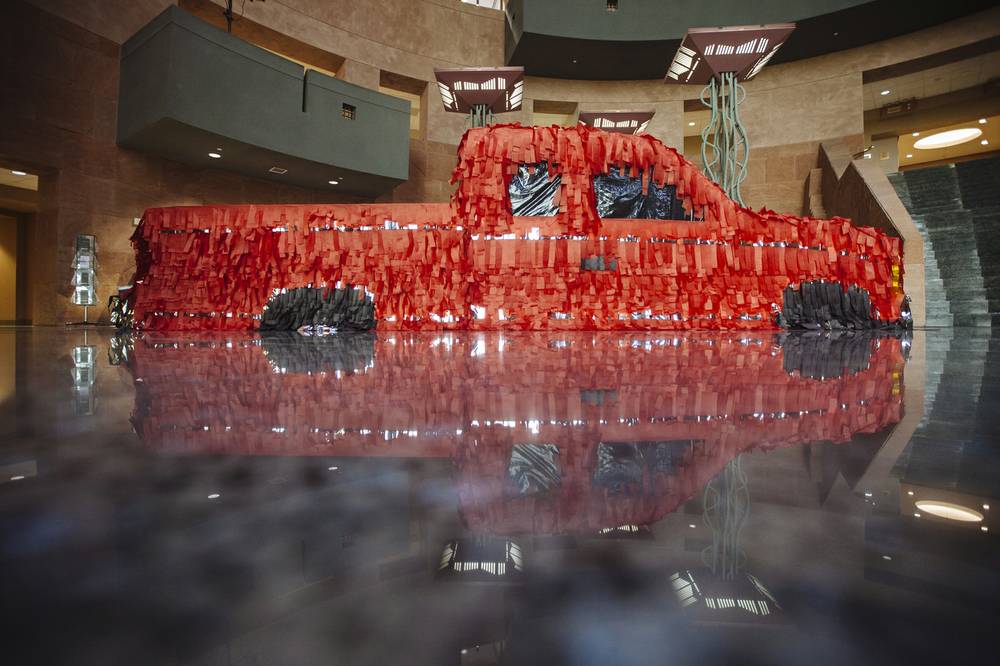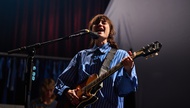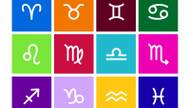
Car Show Through May 8; Monday-Friday, 8 a.m.-5 p.m. Clark County Government Center Rotunda Gallery, 702-455-7030.
Traditional commemorative sculpture meets car fetish in Car Show, the collaborative exhibition by Justin Favela and Sean Slattery at the Clark Country Government Center Rotunda Gallery. Instead of granite and marble, Styrofoam and papier-mâché. Instead of portrait busts and larger-than-life figures, cars. No plaques, but each of the monumental pieces in the show commemorates a violent public death. No tears. This exhibition is less about eulogy than it is about the memes that drive pop culture.
The most flamboyant of three sculptures is the “La Sangre Nunca Muere” memorial to Selena. The pop star’s business associate and murderer Yolanda Saldívar surrendered to Texas police after a nearly 10-hour standoff in her red truck. The artists have rendered to scale the 1993 GMC extended-cab pick-up in Favela’s trademark papier-mâché. The markedly long tissue-paper fringe, low-rider modifications and blood-red color produce a piquant work that weeps for death while, at the same time, proudly affirms life, community and culture. The contents of the cab—tufted tissue-paper flowers in Selena colors—read as both funereal and celebratory.
“Proposal for a Memorial at Koval and Flamingo” appears to take a more somber note with the black-and-gray palette of traditional European commemorative monuments. Lionizing Tupac Shakur’s murder at the Las Vegas intersection, the sculpture consists of a sarcophagus base, an uninscribed stele and oddly levitating silhouette of the BMW 750iL Shakur was riding in at the time of the shooting. Although the wrinkles and folds in the papier-mâché recall different grains of granite or veins of marble, the lack of text, combined with childhood associations of papier-mâché and a flying car, undercut both pomp and ceremony.
“Highway to Heaven” also spins traditional memorials, this time with a focus more on the suspect than the deceased. A white pyramid-obelisk hybrid with a tiny 1992 white Ford Bronco clinging to one side points the finger at O.J. Simpson for the murders of Nicole Simpson and Ron Goldman. The incongruity of the 16-foot-tall papier-mâché monument and diminutive SUV alludes to the ludicrous 90-minute, 60-mile, low-speed car “chase” when O.J. failed to surrender to police. The sculpture ascends toward the Promised Land, but the parked Bronco won’t ever get there.
In reframing the role of commemorative art, Car Show humorously raises issues surrounding the role of media in memory, the conflicted status of pop stars, and automobiles as accessories to infamous, 20th-century crimes. Although everywhere present, death is sublimated, not confronted. Mostly, the exhibit resolves the challenges of the busy Government Center gallery. These three works solidly weight the space through both form and palette, with a success rarely achieved.






